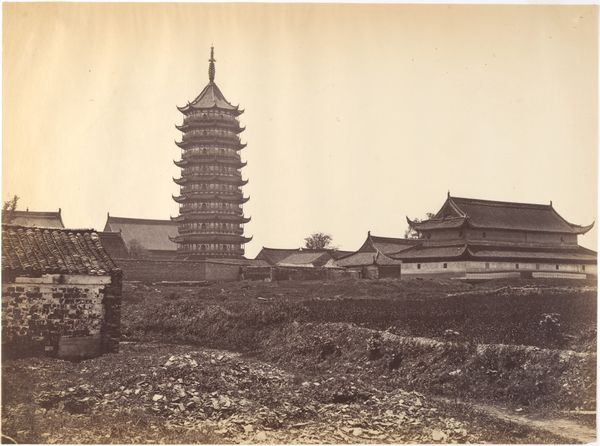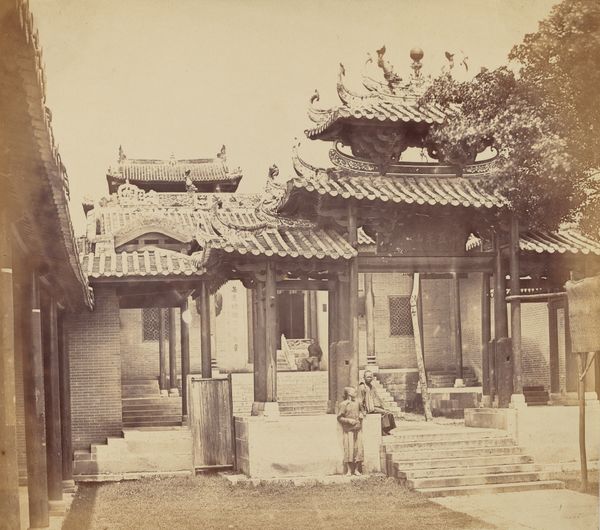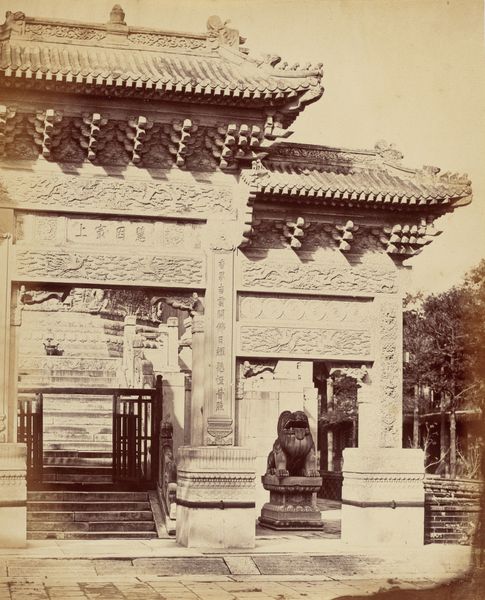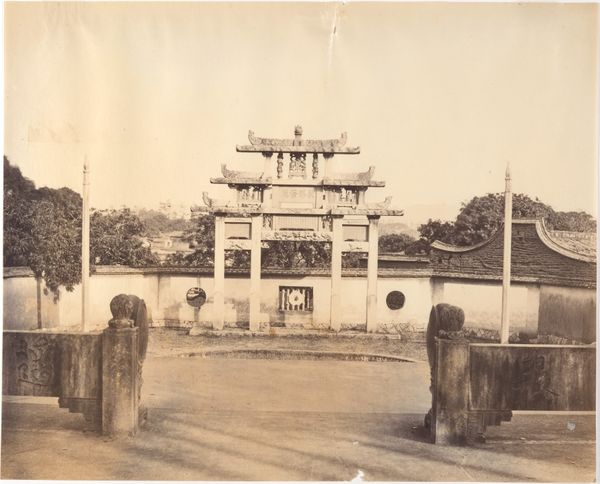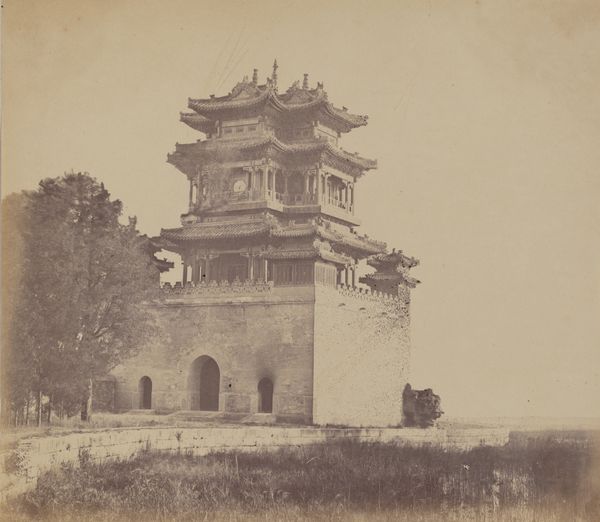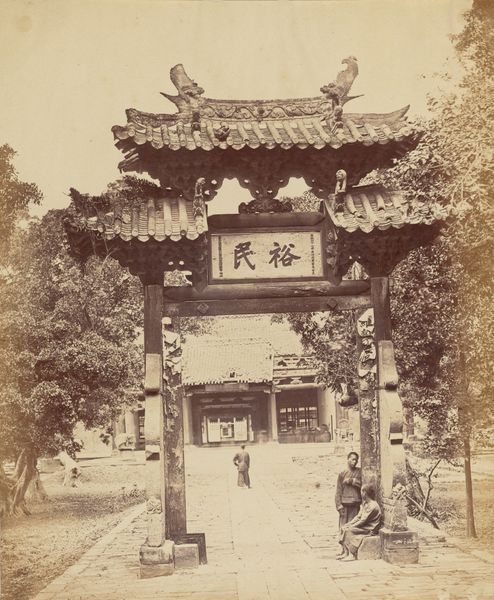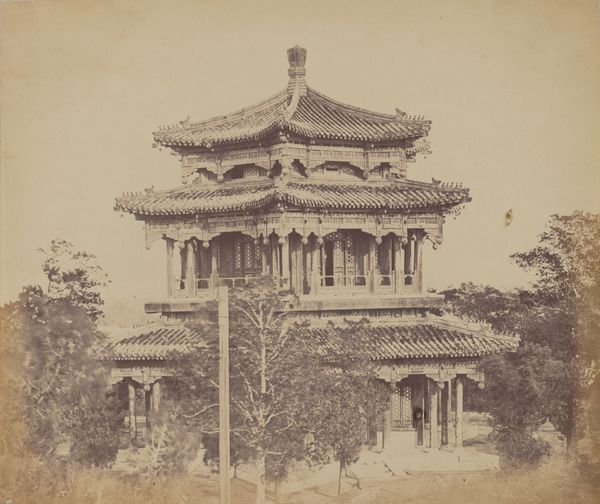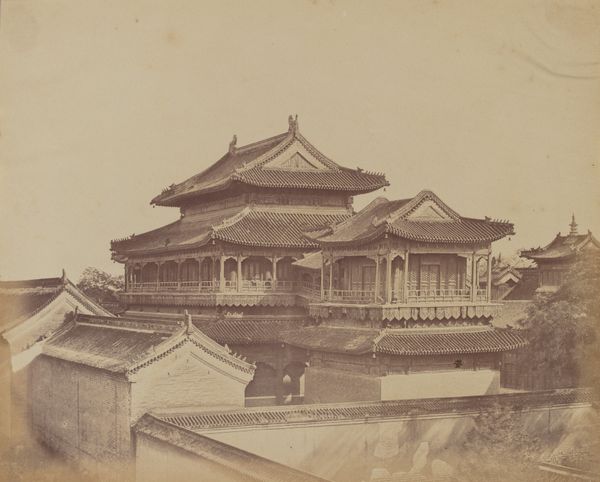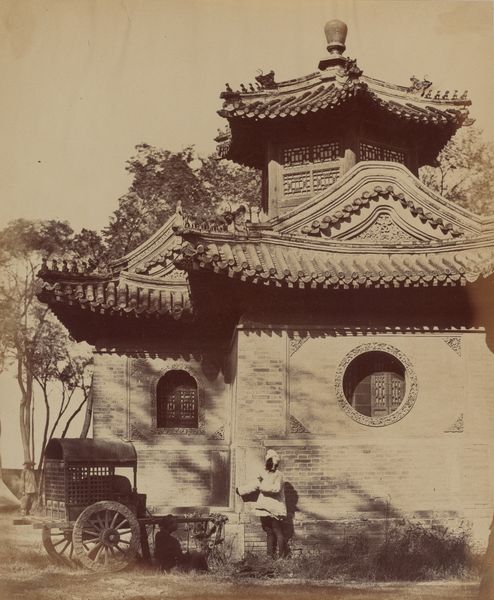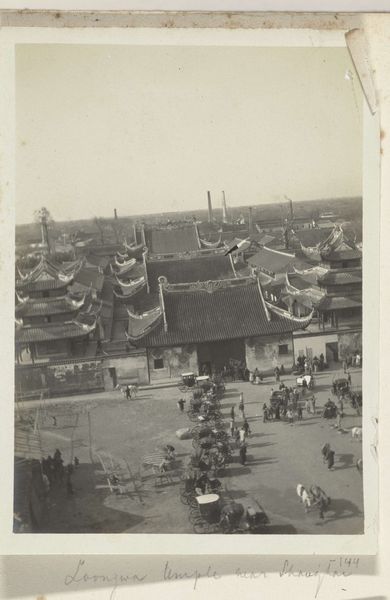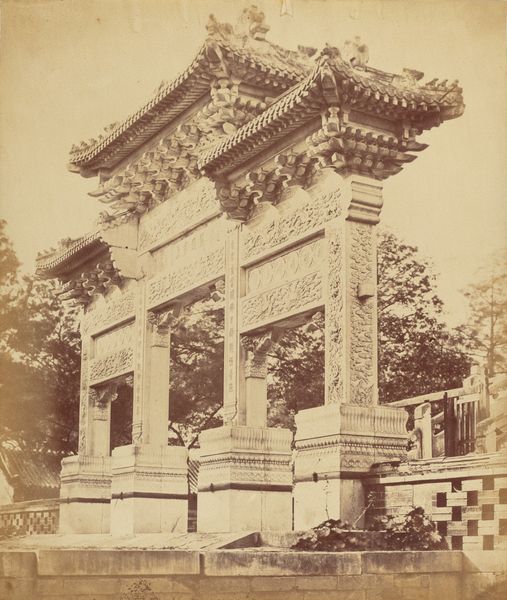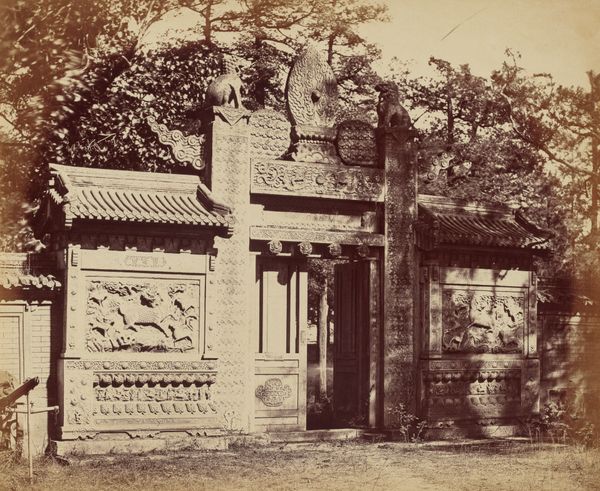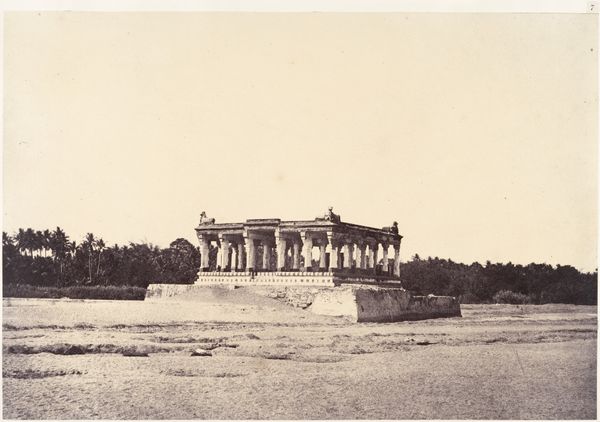
print, photography, albumen-print
#
16_19th-century
# print
#
landscape
#
photography
#
orientalism
#
cityscape
#
albumen-print
Dimensions: image: 26.5 × 34.2 cm (10 7/16 × 13 7/16 in.) mount: 45.5 × 58.1 cm (17 15/16 × 22 7/8 in.)
Copyright: National Gallery of Art: CC0 1.0
Editor: Here we have Linnaeus Tripe’s photograph, "Amerapoora: Ooh-nein Gate of the City," dating from around 1858. It's an albumen print depicting a city gate in what is now Myanmar. The sepia tones and the imposing structure of the gate create a rather monumental and almost desolate feel. What compositional elements stand out to you? Curator: The photograph's formal structure hinges on the interplay between light and shadow, subtly modulating the surfaces. Notice how the tonality emphasizes the geometrical architecture contrasting with the organic tree. The gate itself presents a layered composition, doesn’t it? We have a wall punctuated with rounded forms, topped by an elaborate pavilion structure, a rhythmic sequence emphasized through the play of light across these forms. What’s your read on Tripe's choice of this angle? Editor: I suppose, it focuses on the structural aspects, rather than trying to convey a feeling. The meticulous documentation, seems key, a precise record of architectural form. What is gained by using this… perhaps dispassionate… approach? Curator: Consider the inherent qualities of photography itself at the time. It allowed for an objective capturing, a scientific gaze to study and archive visual form. It creates a semiotic system; lines, forms, and light contribute to the larger structure. We decode its visual language as the interplay between structure and geometry; shadow defines forms, accentuating its inherent structure. The overall arrangement of geometric masses against open, relatively unmarked ground plane. The image presents structure first, and space, rather secondarily. How might the placement within the frame—this deliberate structuring—affect the reception? Editor: It feels quite formal and rigid. This conversation really shifted my thinking on how we see and engage with an image based on structure. Curator: Exactly. And how those elements influence its interpretation in various historical moments and across diverse viewing cultures.
Comments
No comments
Be the first to comment and join the conversation on the ultimate creative platform.
